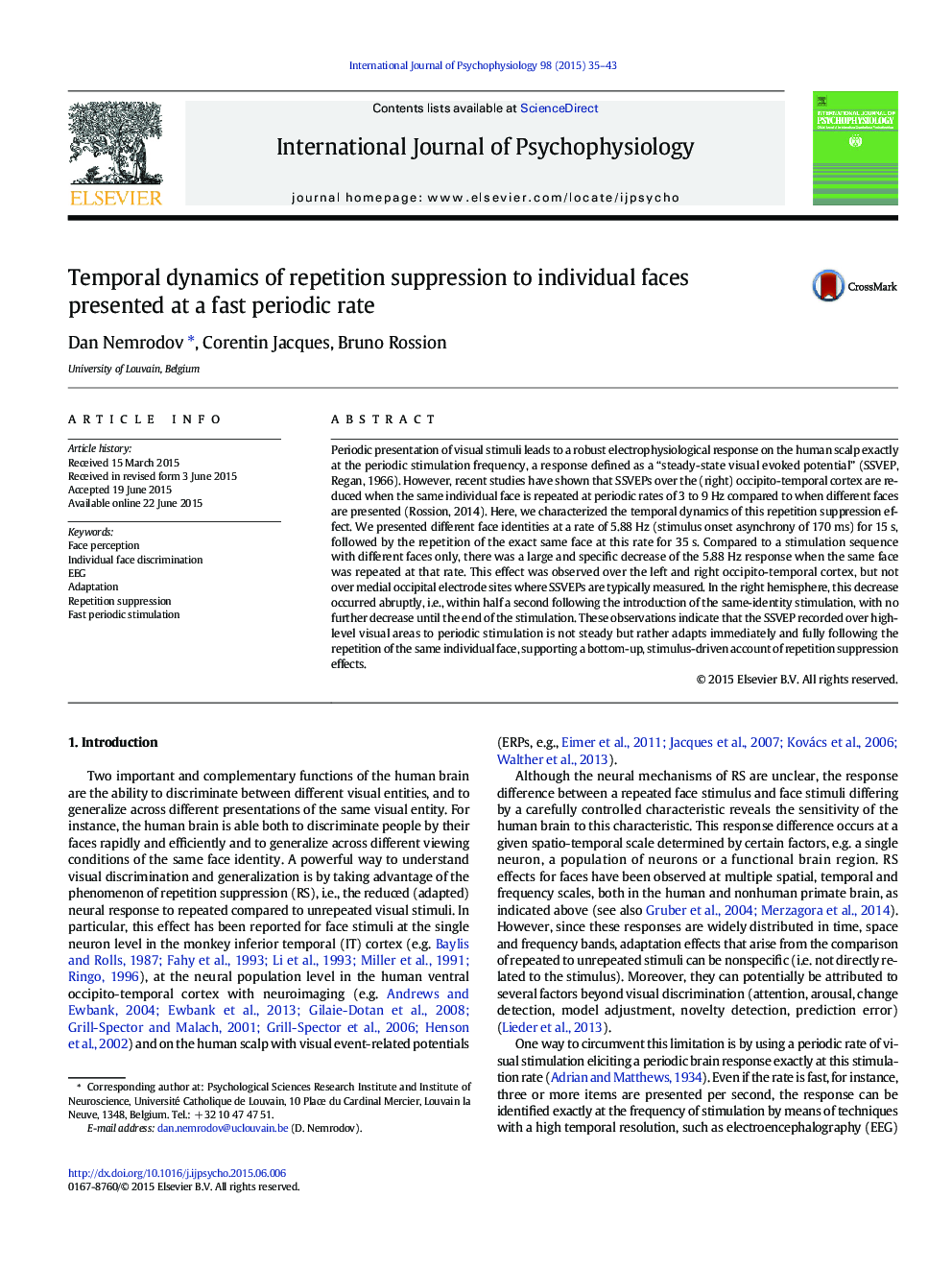| کد مقاله | کد نشریه | سال انتشار | مقاله انگلیسی | نسخه تمام متن |
|---|---|---|---|---|
| 930968 | 1474402 | 2015 | 9 صفحه PDF | دانلود رایگان |
• A large decrease of SSVEP was found when repeating identical faces at 5.88 Hz.
• The adaptation effect is localized over occipito-temporal regions.
• In the right hemisphere, this effect is within half a second of the same face repetition.
• There is no further decrease following the early abrupt adaptation effect.
• The left hemisphere shows a much weaker and delayed adaptation effect.
Periodic presentation of visual stimuli leads to a robust electrophysiological response on the human scalp exactly at the periodic stimulation frequency, a response defined as a “steady-state visual evoked potential” (SSVEP, Regan, 1966). However, recent studies have shown that SSVEPs over the (right) occipito-temporal cortex are reduced when the same individual face is repeated at periodic rates of 3 to 9 Hz compared to when different faces are presented (Rossion, 2014). Here, we characterized the temporal dynamics of this repetition suppression effect. We presented different face identities at a rate of 5.88 Hz (stimulus onset asynchrony of 170 ms) for 15 s, followed by the repetition of the exact same face at this rate for 35 s. Compared to a stimulation sequence with different faces only, there was a large and specific decrease of the 5.88 Hz response when the same face was repeated at that rate. This effect was observed over the left and right occipito-temporal cortex, but not over medial occipital electrode sites where SSVEPs are typically measured. In the right hemisphere, this decrease occurred abruptly, i.e., within half a second following the introduction of the same-identity stimulation, with no further decrease until the end of the stimulation. These observations indicate that the SSVEP recorded over high-level visual areas to periodic stimulation is not steady but rather adapts immediately and fully following the repetition of the same individual face, supporting a bottom-up, stimulus-driven account of repetition suppression effects.
Journal: International Journal of Psychophysiology - Volume 98, Issue 1, October 2015, Pages 35–43
